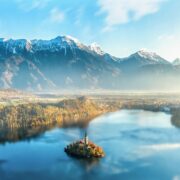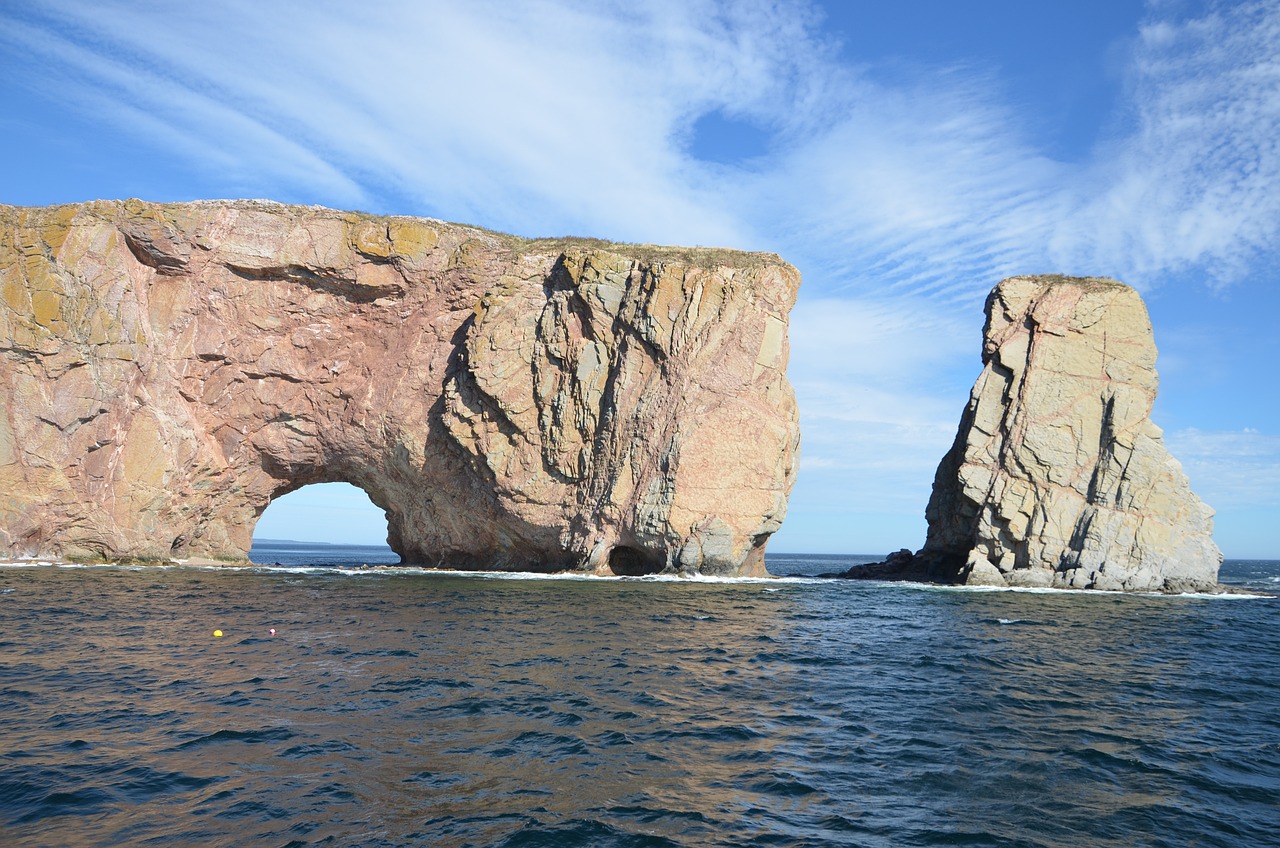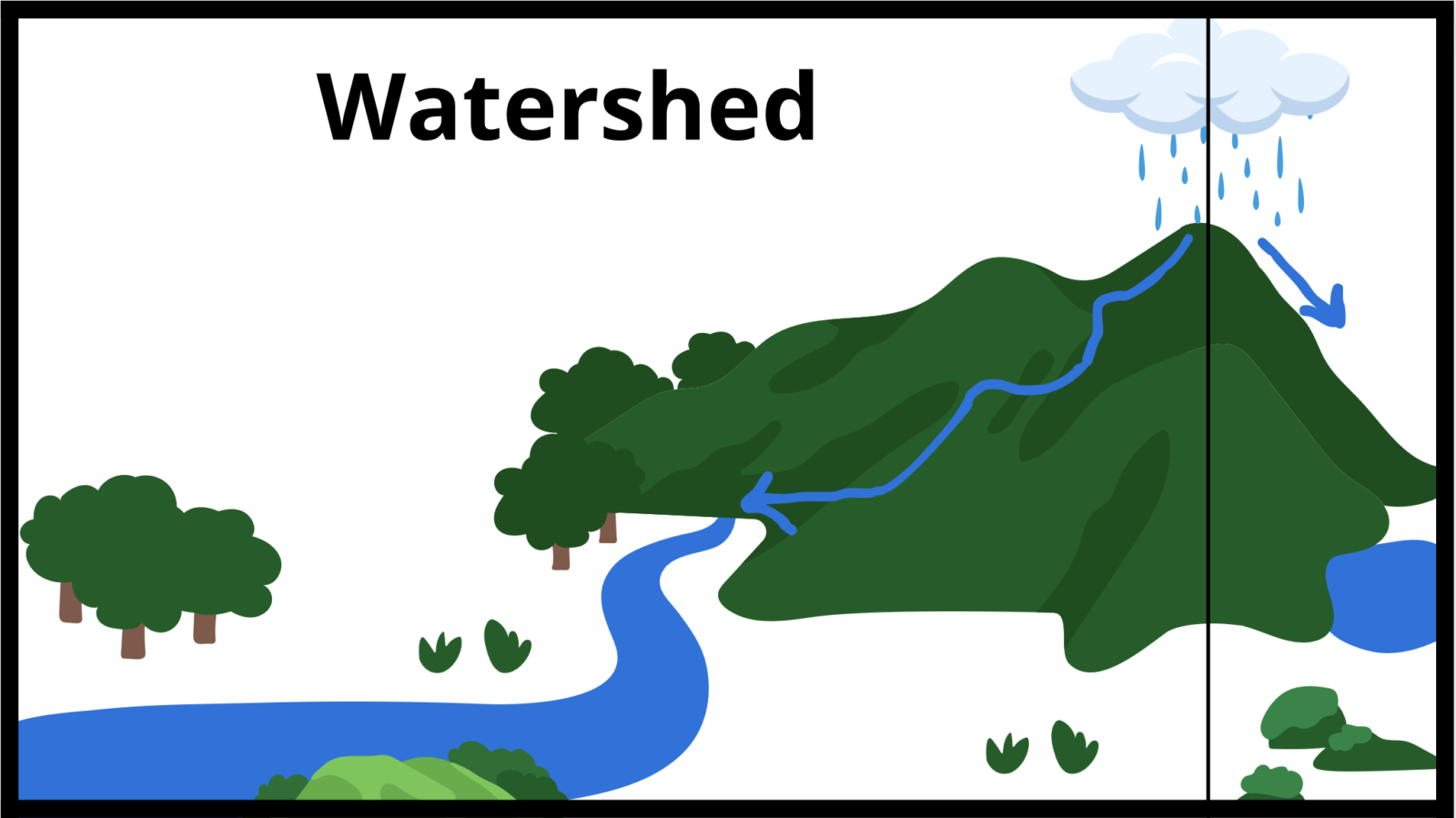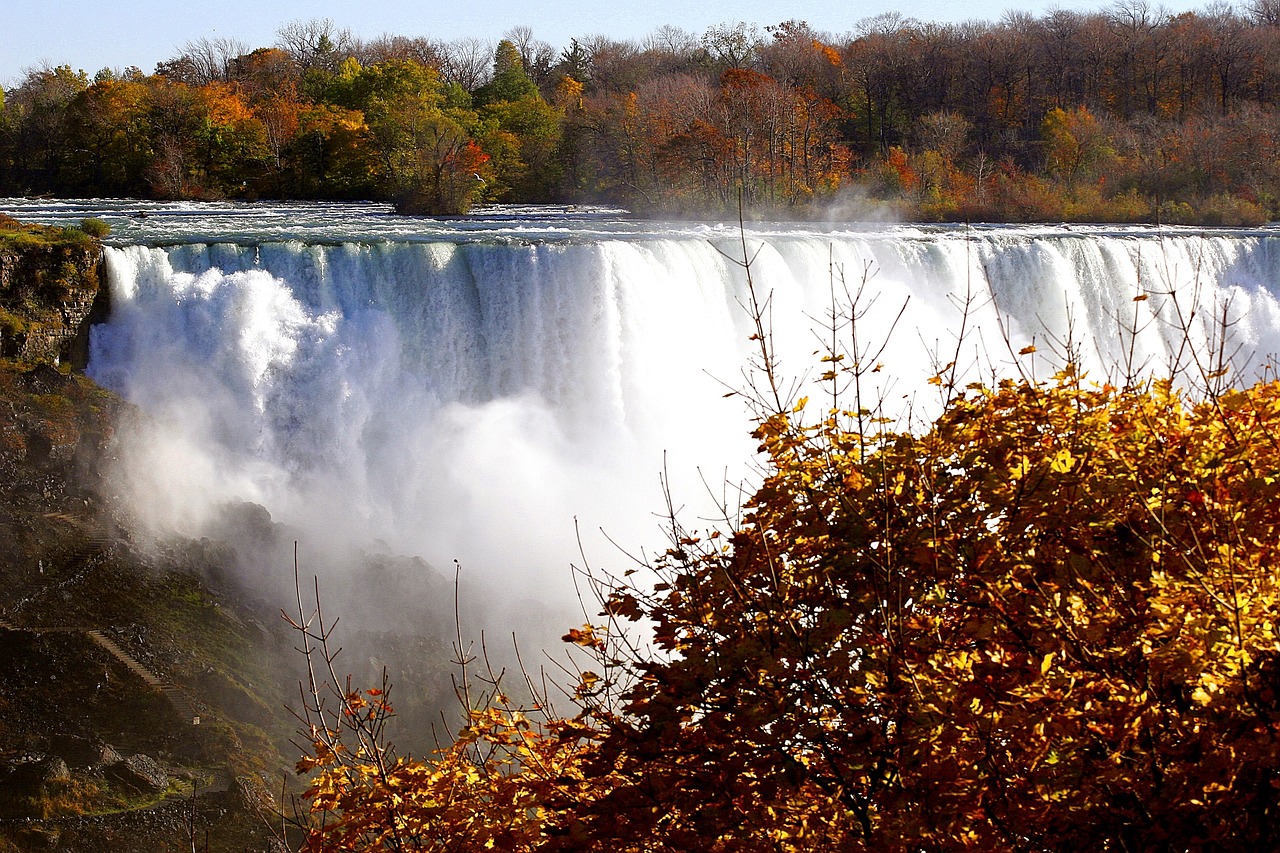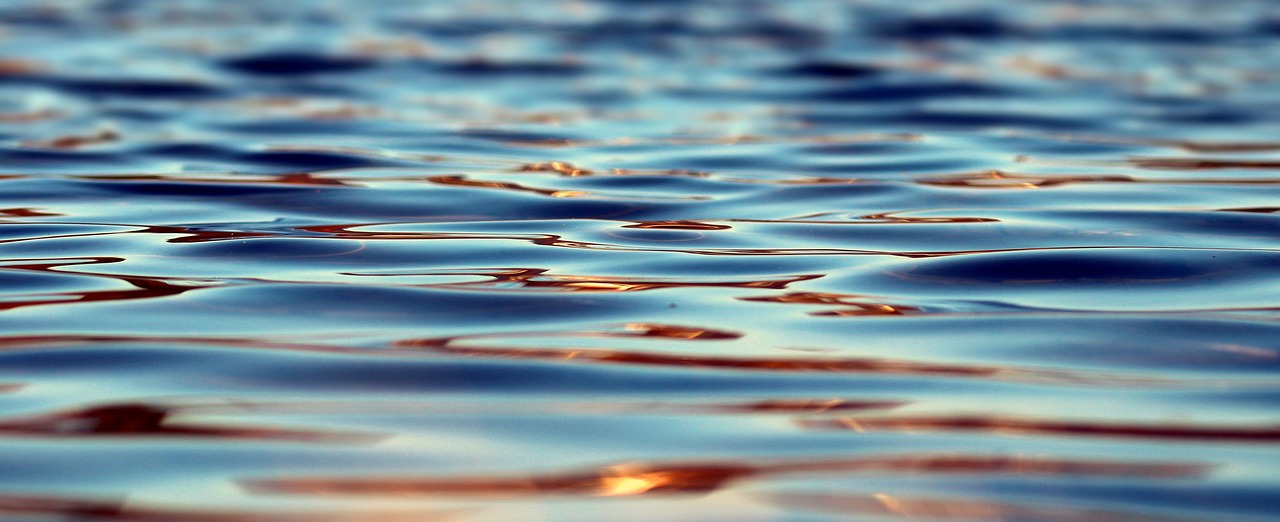WATER; FROM THE MOUNTAIN TO US
The water in our streams, rivers and creeks comes from somewhere. Contrary to the expression, water falls from the sky ! Its distribution in the various watercourses is governed by watersheds.
Do you know what a watershed is?
A watershed is the entire territory that allows water to flow towards a common point. The watershed is delimited by the watershed’s highest point. It determines whether water flows on one side or the other of a mountain crest, or the gradients of the terrain. [1][2][3]
Rainwater and runoff travel from upstream to downstream under the action of gravity; from top to bottom. Water moves from small streams to larger ones, all the way to the oceans.
Water flow in the watershed depends on several factors, including: [4]
Topography : The intensity of the slope varies the flow velocity.
Geology : Rocky substrate allows faster flow than clay, which absorbs it.
Climate : Precipitations enables faster runoff than drought.
Vegetation : Abundant plants act as a barrier to water flow.
Man-made structures : Constructions such as dams restrict the free flow of water.
Are you familiar with the watershed organization (OBV) concept ?
Quebec is home to 3% of the world’s freshwater, and nearly 40% of it comes from the St-Lawrence watershed [5] ! To protect this precious resource, we have created watershed organizations (OBV). In Quebec, we have 40 of these, governed by the Regroupement des organismes de bassins versants du Québec, while our territory includes 430 major watersheds. [3] To discover them, visit the Atlas de l’eau, an interactive map from the MELCCFP.
The main objective of these organizations is to protect the surface and groundwater, and also the environment. OBVs promote cooperation, for example, between governments, municipalities and community groups.3 With this in mind, the OBVs are currently working on revising a document that guides their actions: The Plan directeur de l’eau (PDE), could be traduced to Water direction’s Plan.
Are you familiar with the concept of a Plan directeur de l’eau (PDE) ?
Water direction’s Plan is a “strategic territorial planning tool used to ensure the sustainability of water resources and their uses”, according to the Regroupement des organismes de bassins versants de Québec. Each watershed organization is required to draft one. The issues to be considered are: [6]
– Water quality in terms of microorganisms and potable quality
– Water quantity and flow velocity
– Accessibility and use of water bodies
– Safety against weather and time
– Ecosystem balance and resilience
– The cultural aspect of landscapes and their past
With climate change and natural disasters becoming more frequent, PDEs are even more valuable today.
For our part, T2 is involved in a large-scale project run by the Ouranos organization. This is the CASCADES project, which stands for Expected consequences of worsening severe water shortages in Quebec. The aim is to gain a better understanding of the distribution of water on our territory and the water requirements for multitude species, to manage it efficiently in the future.
This project is part of the process of adapting to climate change and reconciling the various water users and ecosystem needs. T2 is proud to collaborate on this project with its partners AGECO, Nada Conseils and ROBVQ.
[1] Organisme du bassin versant du Nord-Est du Bas-Saint-Laurent. (s.d.) Gestion de l’eau par bassin versant. [En ligne]. https://obv.nordestbsl.org/quest-ce-quun-bassin-versant-.html#:~:text=Un%20bassin%20versant%20constitue%20l,suivent%20la%20crête%20des%20montagnes.
[2] Regroupement des organismes de bassin versant du Québec. (2006-2019). Le concept de bassin versant. [En ligne]. https://robvq.qc.ca/le-concept-de-bassin-versant/
[3] Fondation Rivières. (2022). Qu’est-ce qu’un bassin versant ? [En ligne]. https://fondationrivieres.org/quest-ce-quun-bassin-versant/
[4] SAMBBA OBV Batiscian-Champlain. (2023). Qu’est-ce qu’un bassin versant ? [En ligne]. https://sambba.qc.ca/boite-a-outils/quest-ce-quun-bassin-versant/
[5] Ministère de l’Environnement, de la Lutte contre les changements climatiques, de la Faune et des Parcs (MELCCFP). (2023). L’eau au Québec : une ressource à protéger. [En ligne]. https://www.environnement.gouv.qc.ca/eau/inter.htm
[6] Regroupement des organismes de bassin versant du Québec. (2006-2019). Le Plan directeur de l’eau et les acteurs le d’eau. [En ligne]. https://robvq.qc.ca/le-plan-directeur-de-leau-et-les-acteurs-de-leau/

